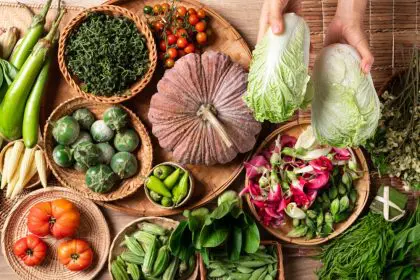The health food aisle has become a masterclass in marketing magic. Those boxes and bags proudly displaying “organic,” “natural,” and “plant-based” labels create a wellness halo that makes you feel downright virtuous tossing them in your cart. But behind those earth-toned packages and promises of nutritional superiority lurks a less Instagram-worthy truth: many “healthy” processed foods might be working against your wellness goals in ways you never suspected.
And no, this isn’t about making you feel guilty for not having time to hand-mill your own ancient grains. It’s about understanding what actually happens when convenience and health claims collide, and how to navigate the supermarket without falling for clever packaging tricks that empty both your wallet and your nutritional bank account.
When “healthy” processing strips away benefits
Food processing itself isn’t inherently evil. Humans have been fermenting, drying, and preserving foods since ancient times. But modern food processing is playing a whole different game, often prioritizing shelf-stability, convenience, and flavor intensity over nutritional integrity.
Even foods marketed specifically as healthy options undergo significant transformations before reaching your pantry. Take those popular veggie chips that seem like a nutritional upgrade from regular potato chips. The vegetable content is often minimal, with the vibrant colors coming from powdered forms of vegetables that have lost much of their fiber, vitamins, and antioxidants during processing.
Or consider plant-based milks, which frequently contain only a small percentage of actual almonds, oats, or cashews, with the rest being water, oils, gums, and sweeteners. While they serve as convenient dairy alternatives, many contain additives like carrageenan or have undergone high-heat processing that denatures proteins and reduces bioavailability of nutrients.
The irony is that many of these products cost significantly more than their “unhealthy” counterparts, creating a premium price tag for a potentially downgraded nutritional profile. You’re essentially paying extra for what’s been removed or damaged.
The sugar trap hiding in plain sight
Perhaps the most pervasive issue with supposedly healthy processed foods is their sneaky sugar content. Products marketed as “low-fat” often compensate for flavor loss by adding sugar or artificial sweeteners. Even items that don’t taste particularly sweet can harbor surprising amounts of added sugars.
Those breakfast bars advertising whole grains and fruits? Many contain as much sugar as a candy bar. Your favorite “protein-packed” yogurt might have more sugar than protein. And that bottled green smoothie boasting a full serving of vegetables likely contains more fruit juice and added sweeteners than actual greens.
The health halo effect makes this particularly dangerous. When we perceive foods as healthy, we tend to eat larger portions and feel less guilty about indulging, potentially consuming more calories and sugar than if we’d chosen the obviously indulgent option and practiced moderation.
What makes this even trickier is the variety of names sugar hides behind on ingredient lists—from obvious culprits like cane sugar and high-fructose corn syrup to more innocent-sounding options like agave nectar, rice syrup, or fruit juice concentrate. While the FDA now requires added sugars to be listed on nutrition facts panels, many “health food” companies emphasize naturally occurring sugars while downplaying added sweeteners.
The ultra-processed problem
Nutritional science has increasingly focused on a concept called “ultra-processing”—the extensive industrial procedures that transform whole foods into products bearing little resemblance to their original form. Research suggests these ultra-processed foods may impact health regardless of their nutrient content.
Even when products match the macronutrient profile of less processed alternatives, their effects on the body can differ dramatically. Ultra-processed foods tend to be absorbed more rapidly, spike blood sugar more significantly, and trigger reward pathways in the brain similar to addictive substances.
Many “health food” products fall squarely in this ultra-processed category, despite their virtuous marketing. That organic, gluten-free breakfast cereal likely underwent extensive extrusion, puffing, and other industrial techniques that fundamentally changed its structure. The plant-based burger that “bleeds” like real meat is an engineering marvel of isolated proteins, oils, and binding agents.
Your body processes these foods differently than it would their less manipulated counterparts, potentially leading to issues with satiety, blood sugar regulation, and even gut health. The emerging research suggests that how food is processed may matter just as much as its nutrient composition.
Additives that subtract from health
Open the ingredient list on many “healthy” processed foods, and you’ll find a chemistry lesson waiting for you. While not all additives are concerning, some common ones in health-marketed foods raise questions.
Natural flavors sound harmless, but this catch-all term can include dozens of chemical compounds protected as trade secrets. While technically derived from natural sources, these highly concentrated flavor enhancers bear little resemblance to anything found in nature and may encourage overconsumption.
Gums and emulsifiers like xanthan gum, guar gum, and carboxymethylcellulose keep products stable and provide pleasant textures. While generally recognized as safe, emerging research suggests they might impact gut bacteria and intestinal permeability in some individuals.
Even “natural” preservatives like tocopherols and ascorbic acid are typically synthetic versions of vitamins E and C, not extracts from whole foods. While not necessarily harmful, they represent the highly engineered nature of these products.
The cumulative effect of consuming multiple additives across different “healthy” processed foods remains poorly understood, especially as the average American diet now includes thousands of these substances that weren’t part of human nutrition until very recently.
Breaking free from the health food illusion
This isn’t about swinging to extremes or feeling guilty about every packaged product in your pantry. Rather, it’s about developing a more nuanced understanding of what truly nourishes your body.
Read beyond the front of the package
Marketing claims on packaging are designed to sell products, not provide nutritional guidance. “Made with whole grains” might mean a product contains a small amount alongside refined flours. “No added sugar” doesn’t mean a product isn’t sweetened with fruit concentrates or artificial sweeteners.
Train yourself to immediately flip to the ingredient list and nutrition facts panel. Ingredients are listed by weight, so if whole foods aren’t among the first few items, the product is primarily made of processed ingredients regardless of its health claims.
Consider the processing spectrum
Instead of categorizing foods as simply “healthy” or “unhealthy,” think about where they fall on the processing spectrum. Minimally processed foods like frozen vegetables, canned beans, or plain yogurt offer convenience without excessive alteration.
When choosing more heavily processed options, be selective. A protein bar made primarily from nuts, seeds, and dried fruit with minimal additives is different from one containing isolated proteins, sweeteners, and stabilizers, even if their calorie and macronutrient counts are similar.
Focus on displacement
Perhaps the biggest issue with supposedly healthy processed foods is what they displace from your diet. Every packaged “superfood” product takes the place of whole foods you could be eating instead.
Ask yourself whether that convenient option is replacing something worse or something better. A veggie chip replacing a potato chip might be a marginal improvement, but both are displacing the whole vegetables your body actually needs.
Finding balance in the real world
Perfect eating isn’t the goal, and convenience matters in busy lives. The key is making informed choices about which compromises serve you best.
Create a personal standard for which processed foods earn a place in your routine. Maybe you prioritize products with ingredient lists you fully understand, or set a limit on added sugars, or choose items with minimal additives.
Consider which convenience foods truly add value to your life. Perhaps prepare-ahead options like cut vegetables, frozen fruits, or pre-cooked grains give you the time-saving benefits without the nutritional downsides of heavily processed alternatives.
Remember that food is more than just fuel—it’s pleasure, connection, and culture too. Sometimes the most nourishing choice might be enjoying that special treat mindfully rather than substituting a “healthy” version that leaves you unsatisfied and searching for more.
The most sustainable approach combines nutrition knowledge with practicality. By understanding the reality behind health food marketing, you can make choices that truly serve your wellbeing rather than just your perception of virtue. Because genuine health comes from the foods that truly nourish your body, not just the ones that make you feel virtuous for choosing them.
















